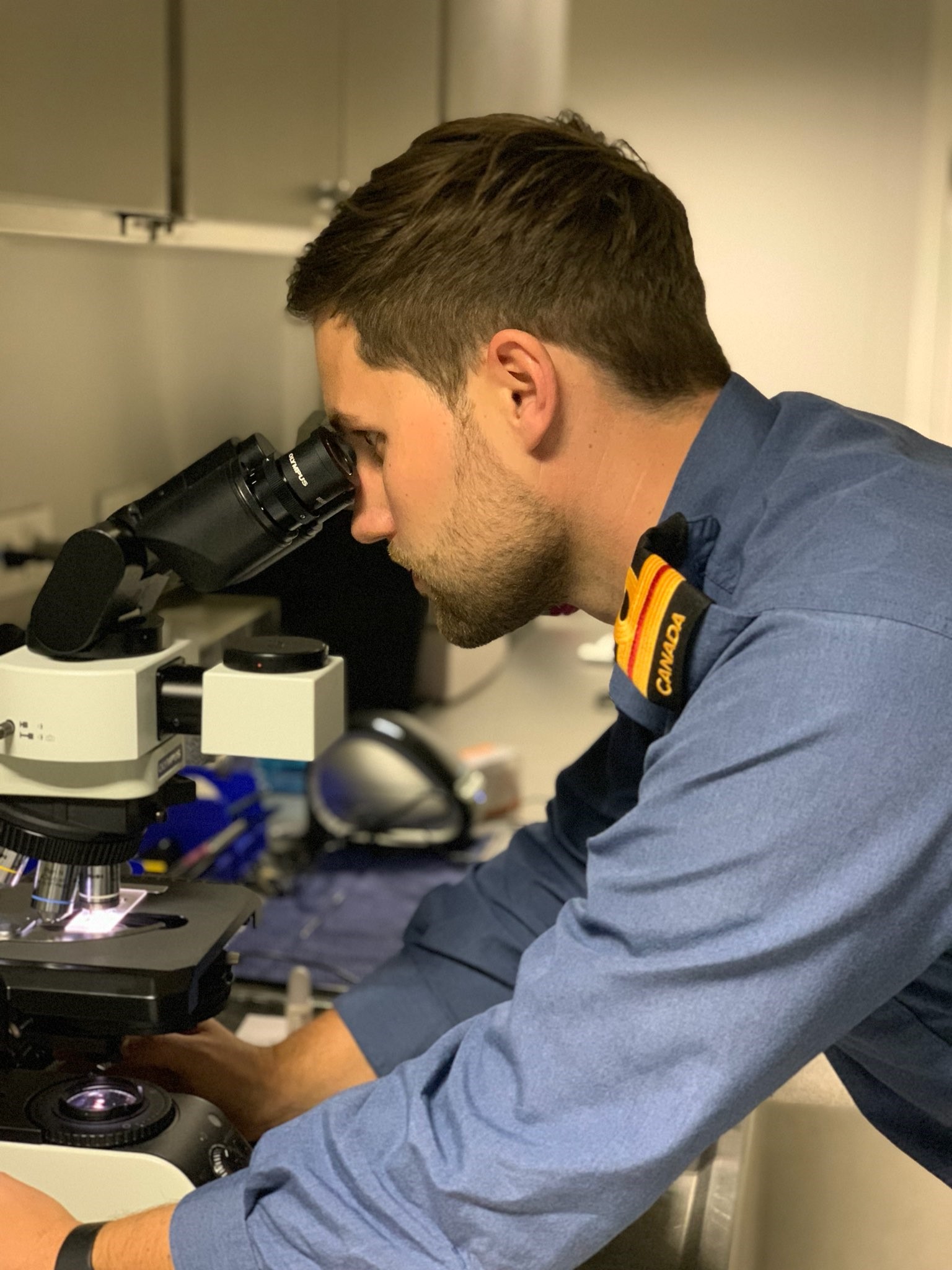People First, Mission Always: Force preservation and generation in a pandemic
By SLt K.B. McHale-Hall
MARPAC PAO
“People first, mission always.”

SUBMITTED
Amidst a global pandemic, this core philosophy of the Canadian Armed Forces is as important now as it has ever been. The objective to preserve Force health while continuing Force generation lies at the forefront of the minds, and ultimately in the hands, of military leadership and medical professionals.
The month of December saw several warships and hundreds of sailors at sea off the coast of British Columbia participating in Exercise Trident Fury, all while the province experienced a resurgence in COVID-19 cases and issued restrictions to certain activities. The capability to exercise the fleet under these conditions can be accredited to the efforts of many, including Fleet Surgeon LCdr Mitchell Drake.
LCdr Drake shares the same position former Medical Officer now Provincial Health Officer, Dr. Bonnie Henry once held during her time in the Forces. In light of the current pandemic, he now finds himself liaising with her and her staff regularly. Both east coasters with hometowns in PEI, and having attended Dalhousie University in Halifax, N.S., for medical school, LCdr Drake jokingly remarks of the commonalities. “I don’t have any shoes named after me yet, but there’s still time.”
His career began in the Naval Reserves serving as a Logistics Officer while studying to become a physician. Since completing his residency in Calgary, AB, he has served in a variety of roles, from deployments with the Canadian Army in Europe and the Royal Canadian Navy at sea in Asterix, to more clinical settings as Base Surgeon and now Fleet Surgeon.
In March, about a week before the Base introduced COVID-19 protocols, he started his current position; his responsibilities are extensive.
“My main role is advising Command Staff in the Fleet, lately on the topic of COVID-19, as well as being the senior medical authority on this coast for all of the operational clinicians.”
To meet the unique challenges facing military operations, they are using tools specifically developed for the Canadian Armed Forces and now more recently for the navy.
“We’ve leveraged our scientists at Defence Research Development Canada, who have developed excellent modelling tools and maps. We use these and other risk calculators they’ve developed to determine the likelihood of bringing a case of COVID-19 on board a ship or into a unit, based on the prevalence of infection in the relevant community, the length and type of quarantine, combined with testing strategies. I do a lot of those calculations in order to advise on risk. While the virus is circulating in our community, we’re not going to get to a place where the risk is zero when embarking a ship or cohorting a large group, but we need to mitigate the risk to a reasonable level given the task they’re going out to do.”
He remains up-to-date on the latest evidence to determine transmission risks, to develop protocols for ships at sea should they have suspicious cases of respiratory illness present to the deployed medical team, or to determine how to overcome an outbreak scenario. But his primary goal is preventing such scenarios through risk mitigation strategies, including pre-embarkation protocols and testing.
Units are following one of three pre-embarkation quarantine protocols prior to sailing: CAF and provincial guidance with travel and group restrictions added; a modified quarantine; or a full quarantine.
Modified quarantines and full quarantines typically last seven to 14 days, occur in a member’s home or military provided accommodations, and come with specific restrictions. Modified quarantines allow specific essential activities to be conducted, and the potential for members to spend the quarantine period in their homes should set household requirements be met.
The strict protocol of a full quarantine eliminates all interactions with others.
LCdr Drake emphasizes the importance that members follow their assigned quarantine protocol.
“We’re putting a lot of trust in the sailors. Where we can, we want to allow for a quarantine that still gives members the opportunity to spend time at home and with their families, if possible, prior to sailing. With the increase in prevalence on Vancouver Island lately we are forced to consider full quarantine as the primary protocol. We’re going through the tabletop exercises now to determine what triggers specifically indicate the requirement for full quarantine. We’re recalculating risk on a daily basis. The Commodore and I are very hopeful British Columbians will continue to heed the advice of Dr. Henry and that we’ll see a significant reduction in our prevalence on the Island such that we can limit the length of quarantine and its impact on our sailors and their families.”
Prior to Exercise Trident Fury, with less than two weeks separating their departures, members of HMCS Calgary and HMCS Regina conducted seven and 10 day quarantine periods respectively, and were required to pass two rounds of COVID-19 testing prior to embarkation, to combat the increasing risk.
Members also completed self-assessments and were screened for personal risk factors prior to embarkation. Once on board ship, masks are worn for a minimum of four days, relaxing the use of non-medical masks after four days, at the Commanding Officer’s discretion. Once a ship is underway, the minimum requirements for a member to join a ship is seven days full quarantine and a negative COVID-19 test.
In total, amidst the surge in prevalence in the province, an estimated 1,400 tests will be conducted in the two weeks leading up to the exercise.
“We don’t have intrinsic testing capabilities here in Esquimalt in our clinic yet. All of the testing that’s happened ashore has relied on Island Health and their lab staff at Victoria General Hospital. Despite the pre-existing workloads they face, they’ve been eager, exceptionally helpful and flexible in supporting us,” says LCdr Drake. “It’s been an interesting time. Scientists, clinicians and Commanders have had to collaborate closely in ways I’ve previously never seen in my career.”






